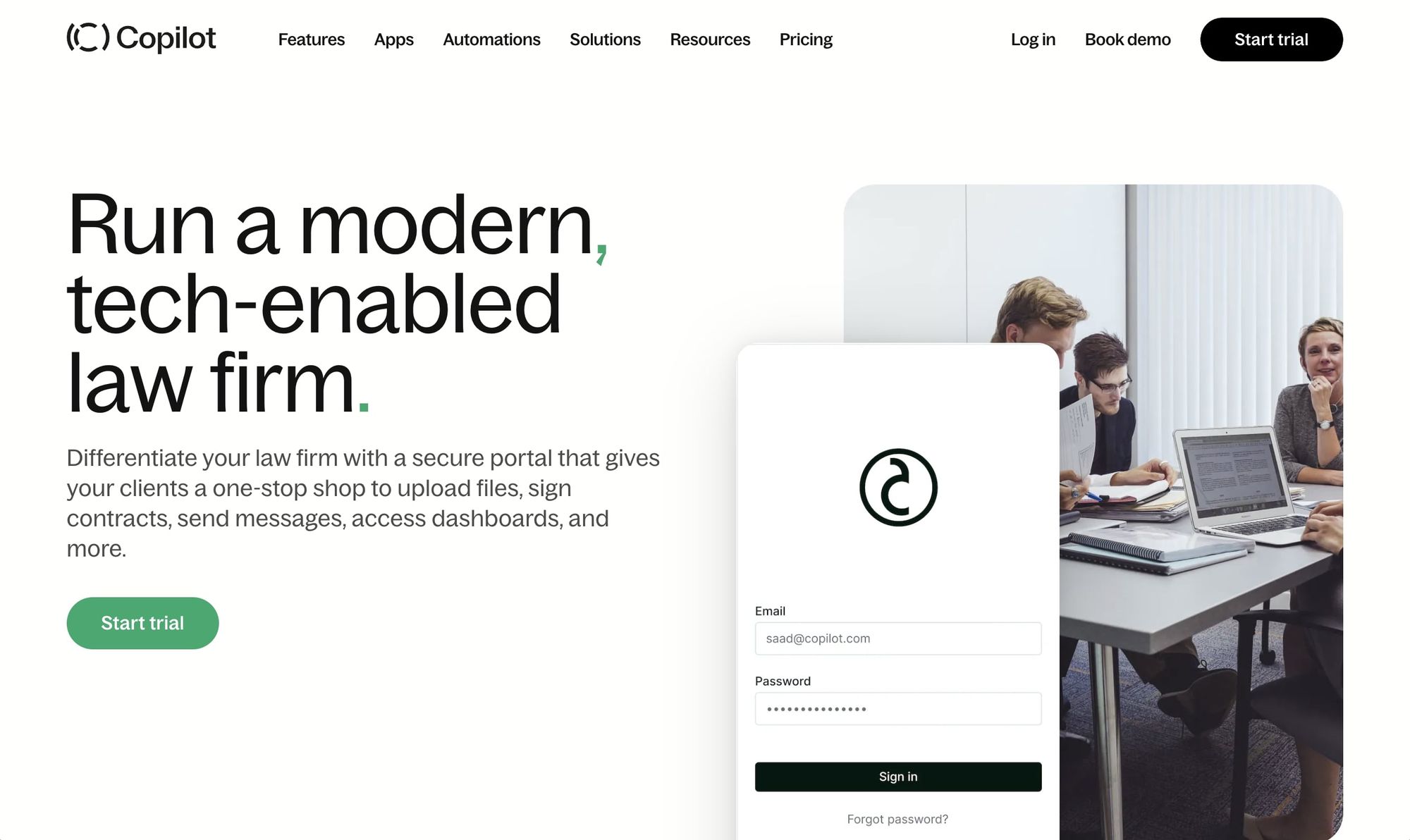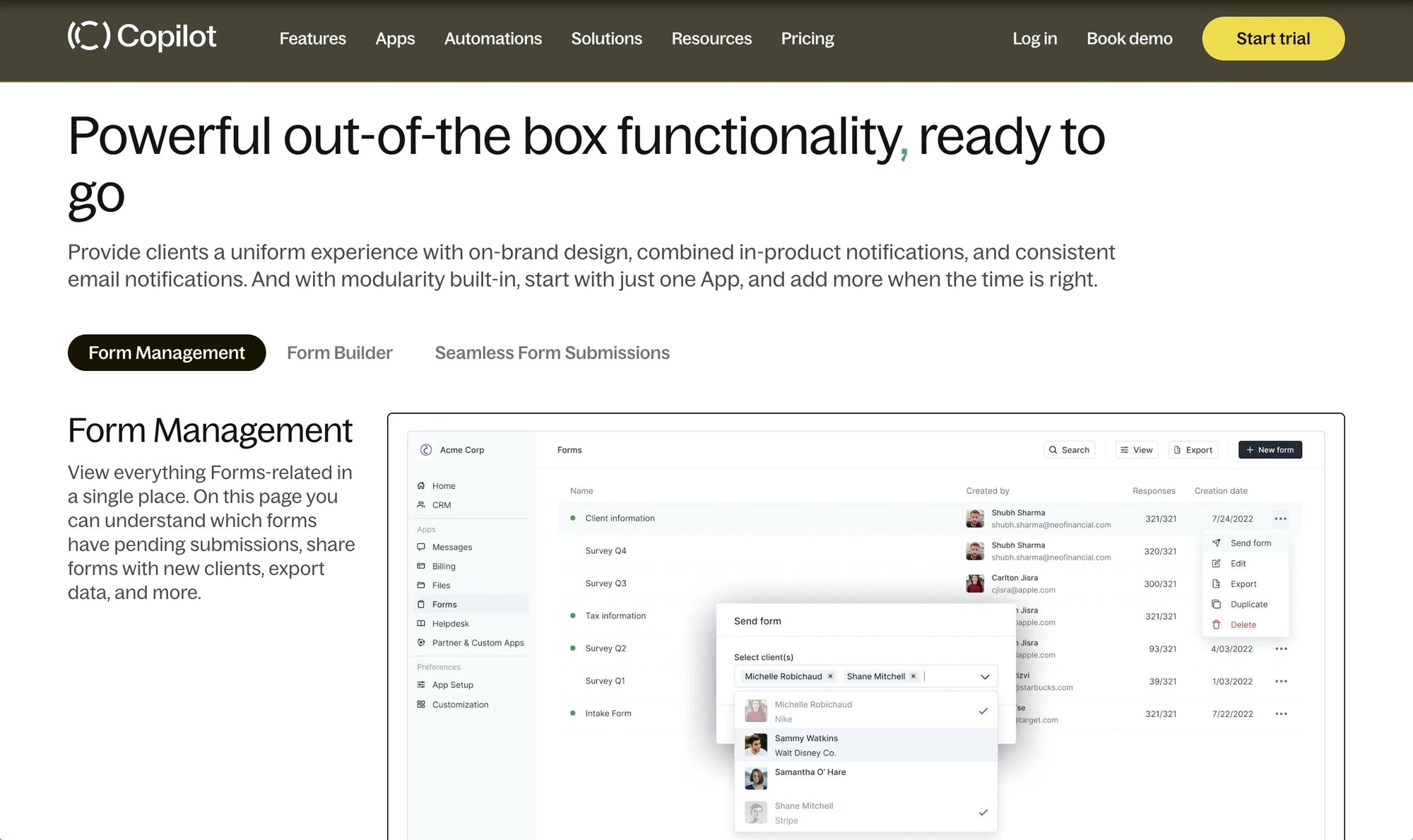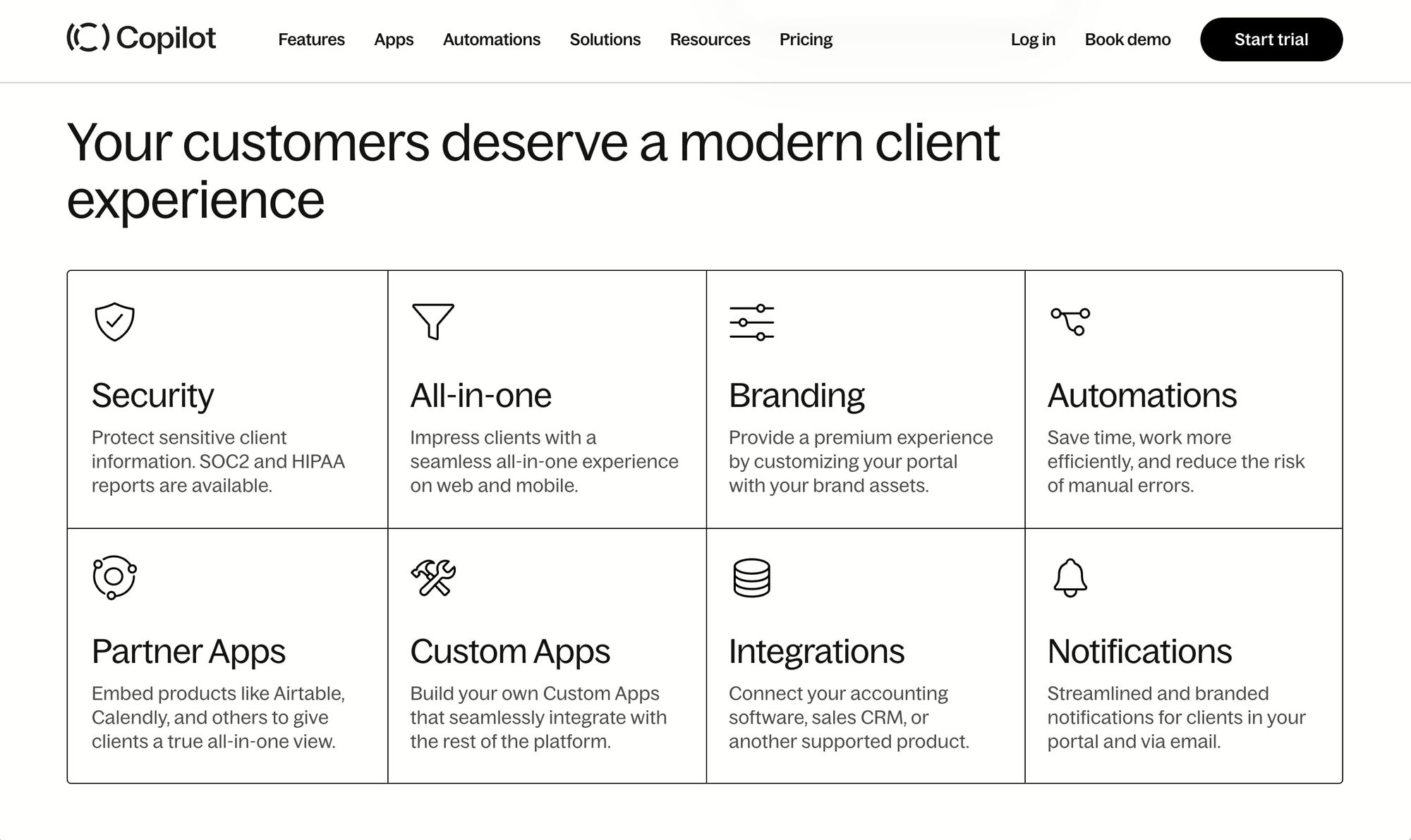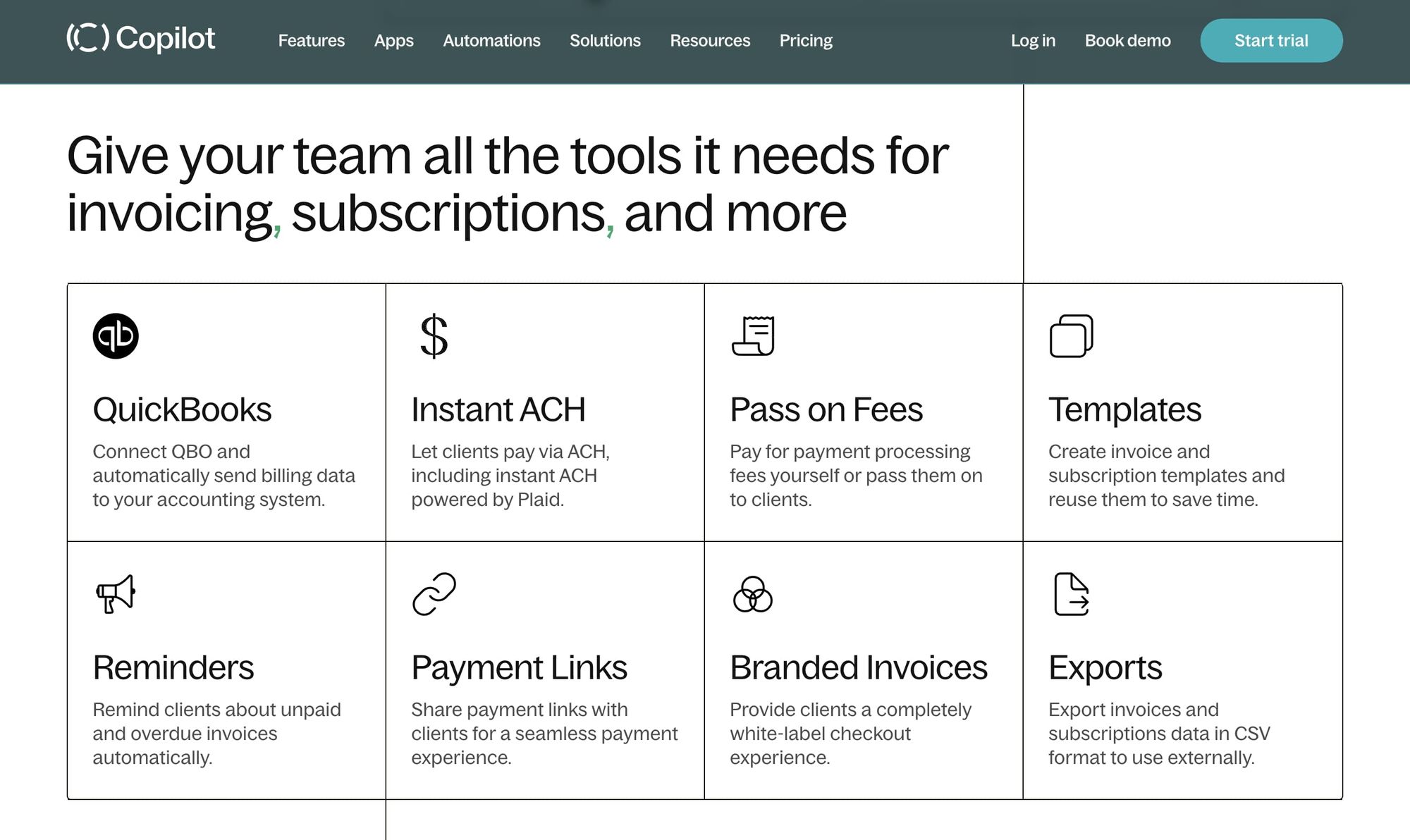
It’s no secret that law firms run on billable hours, and every moment spent with clients contributes to the bottom line. Yet a large number of legal professionals are spending far too much of their time on non-billable work. Legal Insider reports that small U.S. firms say time spent on administrative tasks is their number-one challenge, according to Thomson Reuters’ 2022 Report on the State of U.S. Small Law Firms. Small-firm lawyers surveyed add that they spend a mere 56% of their time practicing law. Additional top challenges cited in the survey include client acquisition, cost controls, and getting paid by clients.
Indeed, non-billable admin work such as client intake, billing, and practice management can consume valuable time that could be spent on revenue-generating activities. This is where law firm automation workflows come into play, presenting a tech-forward opportunity for law firms to streamline operations, increase efficiency, and maximize revenue. By automating time-consuming administrative tasks, firms can reclaim valuable hours that legal pros can dedicate to billable client work. Moreover, they can more easily collect the hard-earned payments that are due rather than waste time tracking down clients.
In the following comprehensive guide, we provide an introduction to law firm automation tools and strategies that can ensure a revenue-driven business model. We’ve also included details on the ways Copilot can be an invaluable tool for creating workflows, optimizing time and productivity, and ensuring profitability for your law firm.
Why Law Firm Automation Workflows Matter
By embracing automation, law firms can enhance client service, attract new business, and optimize their operations. With the help of automation, you can:
- Streamline administrative work
- Accelerate client intake
- Simplify billing and collections
- Enhance practice management
- Streamline client acquisition
- Manage clients more efficiently
- Automate billing and finances
The adoption of automation technology is no longer a luxury but a necessity for law firms looking to thrive in an increasingly competitive and technology-driven industry. It’s crucial for law firms to embrace automation workflows that free up lawyers for the most impactful activities. Before we get into some best practices for implementing workflows, however, let’s dissect some of the benefits you can expect to experience with law firm automation.
7 Benefits of Law Firm Automation Workflows
Let’s dive in for a closer look at some of the distinct ways law firms automation workflows can transform your legal practice — and how Copilot can help your firm automate its processes and strengthen client relationships.

1. Streamlining Client Acquisition
When it comes to client acquisition, automation can be a game-changer for law firms. By leveraging automation tools like those offered by Copilot, law firms can efficiently generate and manage leads. Implementing automated client intake forms and questionnaires simplifies the process of gathering crucial information from potential clients.
Additionally, Copilot allows for embeddable partner apps and integrations that make it easier to capture and qualify leads. Integrating law firm automation tools like Airtable, Calendly, and custom apps ensures seamless tracking and follow-up, maximizing the chances of converting leads into clients — while giving you back more of your time for billable client work.
2. Accelerating Client Intake

Client intake is a critical stage in the legal process, but it can often be time-consuming and resource-intensive. With legal workflow automation, firms can streamline the client intake process by automating intake forms, questionnaires, and document collection.
Automated workflows like those offered by Copilot ensure a seamless and efficient intake experience, allowing firms to onboard clients swiftly, allocate more time to billable client work, and more quickly resolve clients’ pressing legal matters. You’re able to work more efficiently while reducing the risk of errors that can occur with manual tasks.
It also improves the client experience by easing the burden of onboarding and initiating legal representation. And considering that legal clients are often mired in difficult circumstances that brought them to your firm, it can only be a positive thing if you can lighten their load with automation.
3. Managing Clients

Filling your law firm’s pipeline and gaining clients is just the first step — you’ve got to provide a positive new client experience even after onboarding in order to retain your client base. With law firm automation, you can more easily enhance client management via streamlined onboarding processes, including document collection and verification.
Moreover, document automation software ensures that documents are organized, easily accessible, and securely stored. By implementing workflow automation, law firms can efficiently manage case-related tasks and deadlines, ensuring that nothing falls through the cracks.
With Copilot, you’re also able to protect sensitive information through the secure platform and stay in compliance with SOC2 and HIPAA regulations. As a case unfolds, your clients are assured of secure access to case updates, legal documents, and communication, enabling ongoing collaboration and enhancing client satisfaction.
4. Streamlining Administrative Work

Administrative tasks, while necessary, can be a significant drain on law firm resources. Legal workflow automation empowers firms to automate routine administrative processes, such as document organization, e-signature collection, data entry, and file management. By reducing the time spent on administrative work, staff members can focus on delivering exceptional legal services and driving revenue.
With Copilot, you have a secure, all-in-one web and mobile portal where clients can upload files, sign contracts, complete forms, send and receive messages, access dashboards, and more. At its core, Copilot gives you a modern, tech-enabled platform for managing and automating routine tasks that would otherwise take your attention away from the critical client work at hand.
5. Simplifying Billing and Collections

Billing and collections are vital for maintaining healthy cash flow and revenue growth. However, manual billing processes can be complex, prone to human errors, and time-consuming — not to mention difficult to enforce. (Remember that study we cited above about the challenges of getting paid?)
Legal workflow automation enables firms to automate time-tracking, billing, and collections, ensuring accurate and timely, branded invoicing. Automated reminder systems facilitate prompt follow-up on overdue payments, improving cash flow and revenue realization. Essentially, automation with Copilot can save you big headaches and get you paid faster.
6. Automating Finances

Financial management is an essential aspect of law firm operations. Automation can simplify these processes, resulting in accurate and timely accounting and bookkeeping. Integration of automation tools with accounting software streamlines financial management, providing real-time insights into revenue and expenses.
Electronic payment systems facilitate secure and convenient payment collection, while automated reminder systems ensure timely follow-ups on overdue payments and invoices. Simply put, you’ll have a clearer, more organized picture of your finances at a glance, along with actionable data and insights that can drive future growth.
7. Enhancing Practice Management
Efficient law practice management is essential for maximizing revenue and ensuring smooth operations. Legal workflow automation tools offer comprehensive features that centralize case management, deadline tracking, and document collaboration. By automating these practice management tasks, law firms can minimize administrative burdens, optimize internal processes, and allocate more billable hours to client work — and that’s what having a law firm is all about, isn’t it?
Best Practices for Implementing Law Firm Automation Workflows
To successfully implement automation workflows at your law firm, consider the following best practices and tips for successful implementation.
Identify Workflow Bottlenecks
Efficiency translates to greater revenue in a law firm, and one of the primary objectives of implementing automation workflows is to streamline processes and eliminate bottlenecks. To effectively identify opportunities for greater efficiencies, you’ll need to analyze your existing workflows and pinpoint areas where manual repetitive tasks are slowing down operations. Here are some steps to help you identify these bottlenecks and pave the way for automation:
- Document current workflows. Begin by documenting your current workflows in detail. This involves mapping out the various steps and tasks involved in different processes, from client intake to case management and billing. Ensure that you capture the sequence of tasks, dependencies, and any potential roadblocks that may occur during each workflow.
- Identify manual tasks. Once you have documented your workflows, review them to identify tasks that are currently performed manually. These manual tasks are prime candidates for automation. Look for tasks that are repetitive, time-consuming, or prone to errors, such as data entry, document generation, file organization, or even basic client communications.
- Analyze impact and benefits. Evaluate the impact and potential benefits of automating each identified manual task. Consider the time and resources currently allocated to these tasks, and estimate the potential time savings and efficiency gains that automation could bring. Assess how automation can reduce errors, improve data accuracy, enhance client service, or free up valuable time for you and your staff to focus on more strategic and high-value activities.
Set Clear Objectives
Based on the bottlenecks and hindrances to productivity you discover through the exercise above, now define specific goals and metrics you want to achieve. By doing so, you can measure the success of your automation efforts. These goals should be aligned with your firm’s broader objectives and address the identified bottlenecks.
For example, your goals may include reducing manual data entry by a certain percentage, improving turnaround time for client onboarding, enhancing accuracy in billing and collections, or increasing overall operational efficiency. Make sure that each goal is specific, measurable, achievable, relevant, and time-bound (SMART). SMART, clear goals provide a sense of direction and focus, enabling you to track progress and evaluate the effectiveness of your automation implementation.
Research and Select Automation Tools
When it comes to implementing automation workflows in your law firm, choosing the right automation tools is crucial. Selecting tools that align with your firm’s specific needs and goals and seamlessly integrate with your existing systems can significantly impact the success of your law firm automation initiatives. Here’s a breakdown of the steps to research and select the right law firm automation tools:
Assess your firm’s needs
Determine the functionalities and features that are essential for your firm's automation workflows. For example, you may require tools for document creation, client intake management, case management, time tracking, billing, or practice management. Prioritize the functionalities based on their importance and relevance to your firm’s operations.
Conduct research
Explore reputable sources, industry publications, online forums, and peer recommendations to gather insights and information about the different automation tools available. Pay attention to the features, benefits, pricing models, customer reviews, and customer support offered by various tools. Create a shortlist of potential tools that align with your firm’s needs and requirements.
Evaluate integration capabilities
Assess the integration capabilities of the shortlisted automation tools. Consider the existing legal software systems and platforms you use in your law firm, such as document management systems, project management tools, billing systems, or customer relationship management (CRM) software. Ensure that the automation tools you consider can seamlessly integrate with these existing systems to avoid data silos and to streamline your workflows. Integration capabilities enable data sharing and synchronization, ensuring consistency and accuracy across different software platforms.
Consider scalability and customization
As your law firm grows, so will your automation needs. It is crucial to select automation tools that can scale right alongside your firm as it grows. Whether you’re starting out with a virtual law firm or a large-scale operation, consider the scalability options offered by the tools and their ability to accommodate increasing volumes of work and expanding user bases.
Additionally, assess the customization options available within the automation tools. Every law firm has unique workflows and processes, so finding customizable tools that align with your firm’s specific requirements is a must.
Request demos and trials
The real test for law firm automation software starts with getting into a platform and testing out its features. Copilot offers a free trial to enable you to experience the tools firsthand and assess their user-friendliness, functionality, and overall suitability for your firm. You can also request a demo from most platforms to get a glimpse into how the software works.
During the demos or trials, pay attention to ease of use, intuitiveness of the interface, efficiency of the automation features, and compatibility with your firm’s workflows. Ask questions to clarify any doubts or concerns you may have related to your firm’s needs, and compare your assessment with the objectives you have for your law firm automation workflows.
Assess support and training
Evaluate the support and training resources provided by the automation app providers. Robust customer support is essential to address any technical issues or challenges that may arise during implementation or day-to-day usage. Look for providers that offer responsive customer support channels via phone, email, and live chat. Additionally, inquire about the availability of training resources, such as documentation, tutorials, or training sessions, to ensure that your staff can effectively utilize the automation tools and avoid any interruptions to your workflows.
Engage staff and seek input
Look to your staff members who are directly involved in the identified workflows. Seek their input and insights regarding pain points, challenges, and opportunities for improvement. They may have valuable suggestions on how to streamline processes or identify additional bottlenecks that need attention. Engaging your staff in this process not only provides valuable perspectives but also fosters a sense of ownership and buy-in for the automation initiatives.
Monitor and Optimize Regularly
Implementing law firm automation workflows is not a one-time task; it requires ongoing monitoring and optimization to ensure that the automation tools continue to deliver maximum results. Regular monitoring allows you to identify any issues or areas for improvement, while optimization enables you to fine-tune the automation workflows into well-oiled machines. Reviewing data and analytics as well as user feedback can help you see what’s working well and what needs improvement so your automation workflows never get stale.
Enhance Client Relationships With Copilot

With more and more consumers expecting a seamless experience when working with a service business, law firms can’t afford not to implement automation processes. Legal workflow automation offers a strategic advantage by minimizing non-billable hours and maximizing billable client work. By adopting tools like Copilot, law firms can automate administrative tasks, accelerate client intake, simplify billing and collections, and enhance all aspects of practice and client management.
Copilot offers a comprehensive law firm client portal and practice management software designed to automate routine tasks that steal your attention away from billable activities. With Copilot, law firms can revolutionize how they interact with clients. The platform facilitates seamless communication, document sharing, invoicing templates, collaboration, and more, strengthening client relationships and enhancing transparency. It’s the one tool you need to get back to doing what you do best: practicing law. To learn more and get started, start your free trial today!
Share this post
Sign up for our newsletter
Subscribe to our newsletter to receive emails about important announcements, product updates, and guides relevant to your industry.
